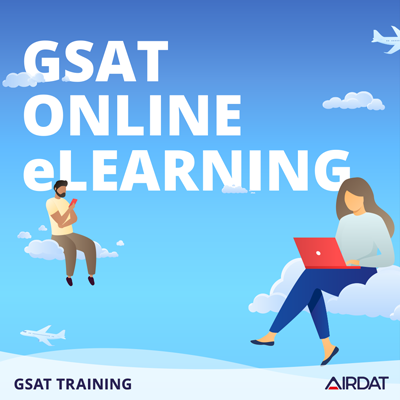Driving airside poses a unique set of challenges at any time of day. With several vehicle types operating in high risk areas, the unique responsibilities of each personnel and the complex nature of airport infrastructure. At night, safety concerns are further amplified. Here, we’ll explore how e-learning and driving simulator training will enhance safety and efficiency for airside drivers at night.
What unique challenges do airside drivers face at night?
By nature, driving airside has hazards and risks, driving airside at night carries its own set of challenges and sometimes higher risks. Reduced visibility is, of course, a major factor but with construction work often carried out at night, there’s a high possibility of wildlife intrusion, and fatigue is more likely to set in. It’s easy to see why training and permits are required for the individuals who undertake airside roles. But, how does training affect safety?
AIRDAT has developed a Driving Airside at Night course to combat these potential risks. Follow the link to find out more.
Why is airside driver training so vital?
Airside drivers come into close contact with aircrafts, airside vehicles and other important airport infrastructure. Collisions and incidents have the potential for huge disruption and, in a worst-case scenario, pose a threat to life. It follows then that drivers operating airside are considered highly specialised personnel with complex and ongoing training needs. Airside driver training usually combines face to face, e-learning and practical assessment and is likely to include:
- Safety procedures
- Airport specific navigation
- Specialist skills
- How to communicate effectively with other airport staff
- Any changes to runway layout or airport infrastructure
Well-trained drivers will contribute to the safe and efficient running of airport operations, but could airside driving simulator training be of particular benefit?
How could simulator training improve airside driver safety at night?
Simulator training provides a realistic and immersive yet risk-free environment in which airside drivers can practise real-world scenarios in adverse conditions. Here are three ways that simulator training will help airside drivers with the increased hazards of driving at night:
1. Drivers can practise hazard perception and response
A simulator can perfectly replicate the conditions of an airside layout in low light, allowing drivers to practise with limited visibility. With reduced lighting, shadows and signage, the airside driver will encounter and practice dealing with challenging conditions in a safe environment.
2. New drivers can familiarise themselves with runway/taxiway markings ahead of time
Runway and taxiway lighting is essential for airside safety in low lighting. Drivers new to the role or to a particular airport can practise working with markings and other visual cues ahead of time to avoid safety risks. Similarly, when there are changes to airport signage and infrastructure, additional training will be needed.
3. Drivers can practise correct procedure and compliance
Simulator training gives drivers the opportunity to practise adhering to all low light safety procedures. The software will provide immediate feedback on missteps or non-compliance to enable drivers to learn as they work and senior staff members to identify problem areas.
AIRDAT partnership with TERN bridges the gap between theory and practice
AIRDAT have partnered with TERN Systems, the company behind the cutting-edge Orion Airside Driver Simulator. The Simulator uses gaming software to create an ultra-realistic and immersive training experience using VR and AR. The technology is seamlessly integrated with AIRDAT’s Passport safety system to create airport-specific training modules based around safety concerns and incident hot spots. The training is recorded and tracked in real time to support compliance and create audit-ready records on the go. And, it’s not just night driving that is positively impacted by working with AIRDAT.
If you’d like to know more about how AIRDAT’s e-learning and simulator training will enhance the safety and efficiency of your airside drivers, then get in touch with a member of our team today.
How AIRDAT’s Passport System could improve other high risk scenarios
We know that the chance for incident rises significantly in low light but there are other conditions that could impact a driver’s work, such as:
- Snow and winter ops
- Changes to airport infrastructure
- Extreme weather conditions
- Ongoing maintenance
- High volume of traffic
Before a driver is ready to work airside, they must have comprehensive training.
Want to read more about how to lower the risk of driver incidents?
The AIRDAT Passport AIrport Safety System is not only able to provide the training itself but allows airport operations and training teams to control the entire training management system from one easy-to-use interface. Training and permit info for the entire airport staff is available in an intuitive cloud-based package which also consolidates e-learning, simulator training and in-person training.
Get in touch today to find out how we can assist in the smooth running of your airport.

